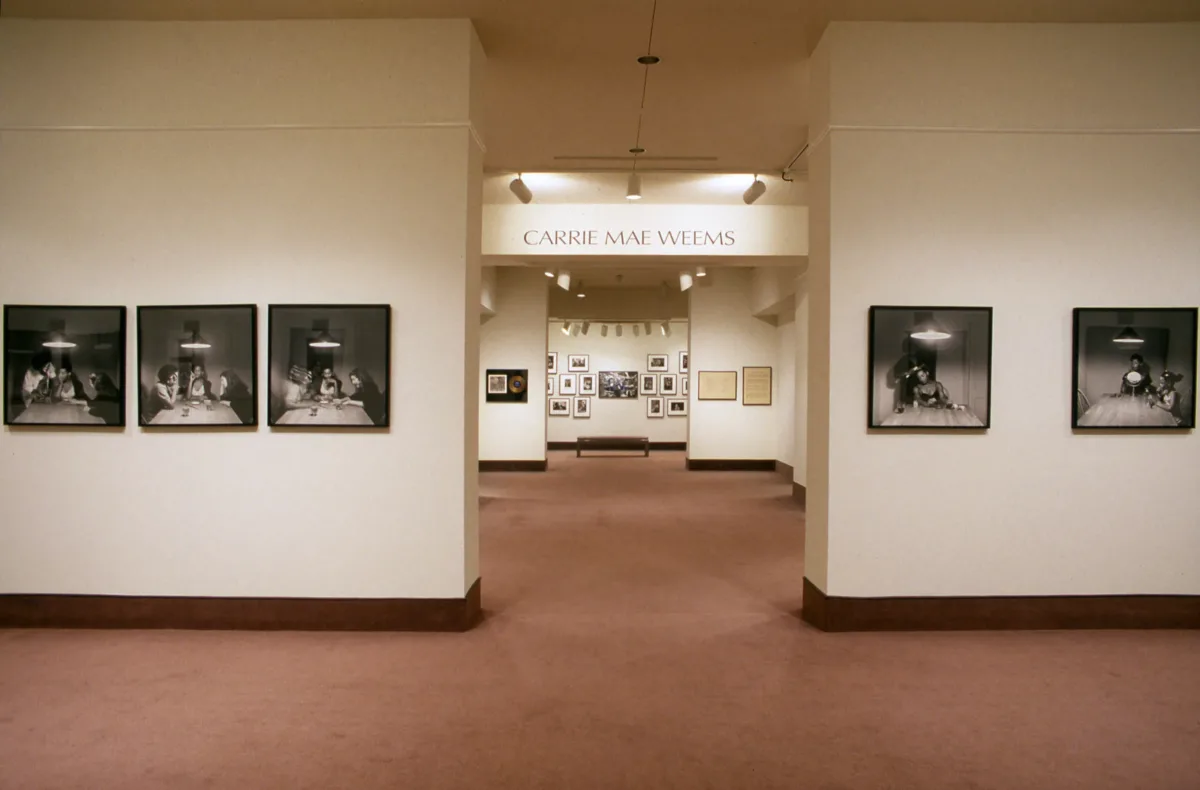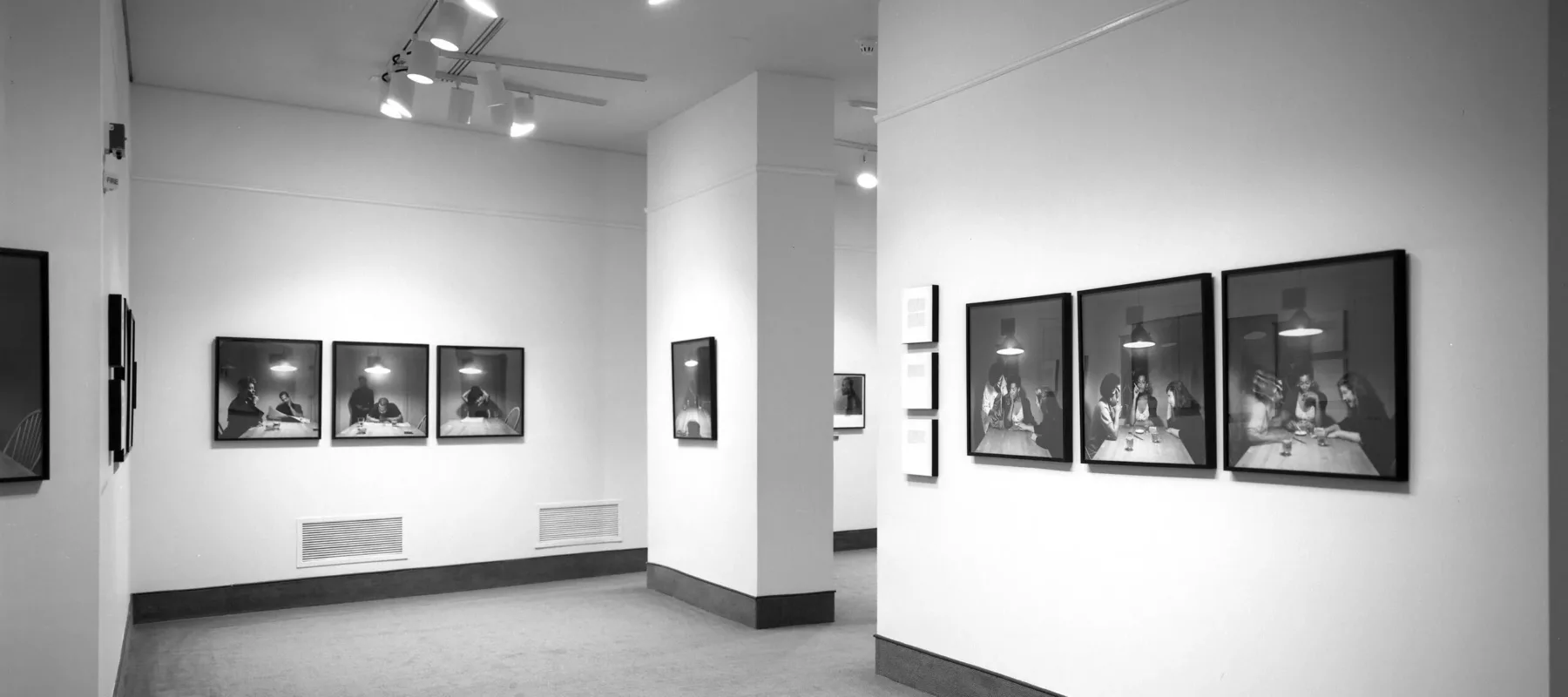NMWA proudly presents the first traveling survey of works by photographer Carrie Mae Weems, on view from January 7 through March 21, 1993. The exhibition contains a number of works that have never been seen before and features a selection of approximately 120 photographs and accompanying texts created from the late 1970s through 1992.
Carrie Mae Weems is co-curated by NMWA Curator of Modern and Contemporary Art Susan Fisher Sterling and independent curator Andrea Kirsh. “Let me say that my primary concern in art, as in politics, is with the status and place of Afro-Americans in our country,” Carrie Mae Weems has said. For more than a decade, contemporary American photographer Carrie Mae Weems has challenged issues of identity, race, gender, and class through a powerful combination of photographic imagery, engaging narratives, and provocative humor.
Weems’ Ain’t Jokin’ series, 1987, confronts racist humor as a process of projection and scapegoating; a mirror held up to reveal the oppression of African Americans. By juxtaposing texts with her photographs, Weems dramatically transforms racist jokes into a positive attack on negative humor. The American Icons series from the same period deals with the racist iconography of ordinary domestic objects, such as the letter holder in the form of an African-American worker. In the 1990 Untitled series, Weems employs compelling visual and verbal narratives depicting the emotional changes in a woman’s personal relationships. Photographing herself and her friends enacting scenarios from daily life, she transforms the ordinary into psychological drama.
Colored People, 1990, uses a minimalist grid of portraits to explore distinctions of color among African American people, while the 1991 installation And 22 Million Very Tired and Very Angry People, suggests the depth of Weems’s political consciousness. Her newest series from 1992 focuses on the Gullah people of the Georgia-Carolina Sea Islands. Stretching back into folklore and customs, she creates an evocative historical chronicle of both positive and negative events and circumstances that have had a decided impact on African-American culture.
Delving deeply into aspects of the African American experience as she and others have lived it, Weems’s photography and texts open a dialogue with her audiences, causing people to confront not only the artist’s view of African American culture but their own particular racial, ethnic and political biases and sensitivities as well.

Installation image of Carrie Mae Weems
